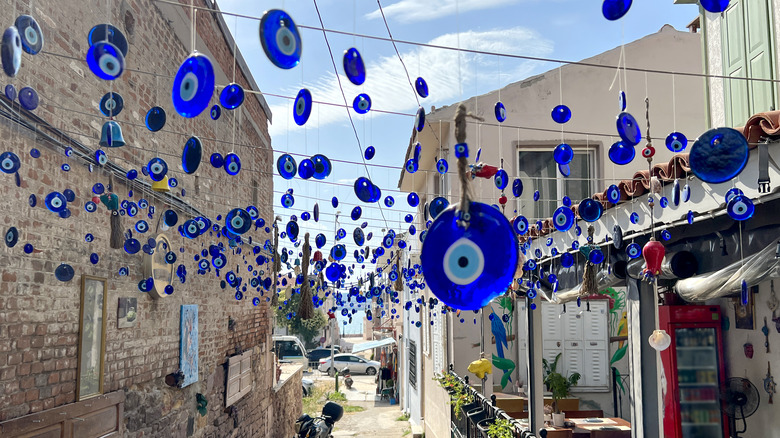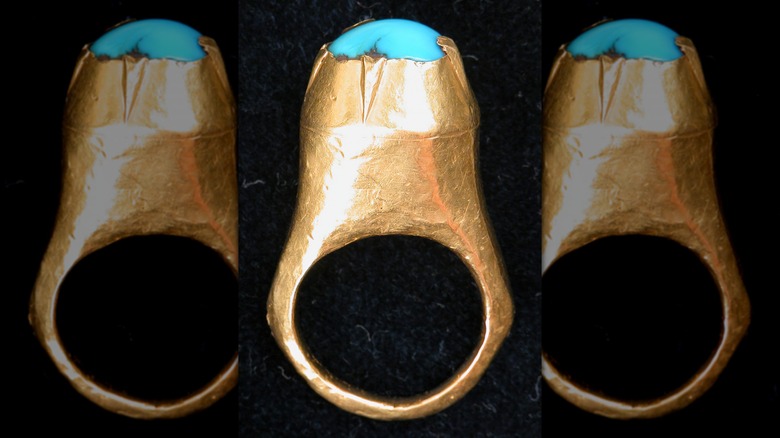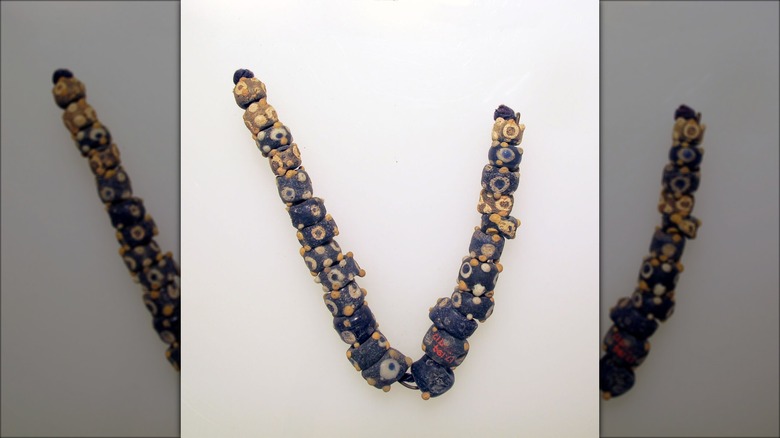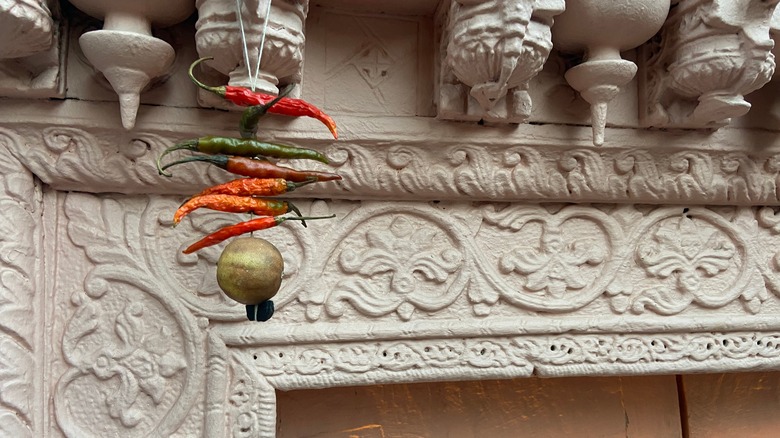What Is The Meaning And Myth Of The Evil Eye?
It's common knowledge that the symbol of a blue eye set on a blue ring symbolizes the "evil eye," an image so iconic that it was officially added to the emoji set in 2018 as part of Unicode 11.0. It quickly became popular on both social media and private correspondence, featuring in the posts of many celebrities including Wonder Woman herself, Gal Gadot. But while the eye became widely used as a good luck charm, is there more to the gazing blue eye than that?
The answer: Yes there is. Often called the "evil eye" in English, in countries such as Turkey, Greece, and other territories near the Mediterranean, the symbol typically comes in the form of a glass bead. According to Al Jazeera and TOOISTANBUL, it is called "nazarlik," "nazar boncuk," or "nazar boncugu" in Turkey, and it is worn as an amulet that tradition says protects against the "evil eye." "Nazar" roughly translates to "look" in Arabic, while "boncuk" means "pearl" in Turkish. In many cultures, rather than the symbol itself, the evil eye is an external curse that might afflict a person or household through a dirty look, or what is sometimes known as the "ol' stink eye."
A widely held belief
The superstitious belief that ill fortune could befall someone from a dirty look is found in many cultures. In fact, the belief is found around the world, from the Mediterranean to Asia to Central America. And the belief is ancient. According to the scholar Marie-Louise Thomsen in the journal Journal of Near Eastern Studies, historians in the early 20th century successfully found evidence of evil eye superstitions among the Assyrians and Babylonians and ancient Mesopotamia — the area now occupying Iraq as well as in Iran, where turquoise is said to repel evil curses.
The evil eye is often especially linked to the idea of jealousy: It is an envious look from a neighbor, acquaintance, rival, or stranger that creates a hex of bad fortune over someone, especially someone successful. At its heart, the concept of the evil eye is a warning to those who gain wealth and prestige against wearing their success too openly and attracting envy, which may lead to their undoing. It is said that even compliments might draw the evil eye toward the recipient.
The origin of the Nazar bead
According to the travel writer Diana Darke in her guide "Eastern Turkey," the eye of the nazar is typically blue to represent the eyes of visitors to Turkey from northern Europe, who often had blue eyes that were generally rare in Turkey and the surrounding regions. It is believed that foreigners — like tourists visiting a new place today — were more likely to stare at locals, giving the impression that they were giving them malign glances rather than curious ones. The association of the color blue with the evil eye is also found across the border in Greece, with the ancient Greek philosopher Plutarch claiming that those with blue eyes were especially adept at bestowing hexes on those around them.
Though the image of the nazar is today associated with a certain hue of blue glass, the modern symbol is believed to have evolved from an ancient people, the Phoenicians, who lived in the Eastern Mediterranean in 1500–300 B.C. and decorated their jewelry with protective blue eyes.
Other defenses against the evil eye
While the nazar is the most famous symbol that is believed to ward off the evil eye, cultures around the world have developed a great many different charms and artifacts that are said to keep their bearers safe from the maleficent gaze of those around them.
In India, where belief in the evil eye — "buri nazar" — cuts through every strata of society, there is a great variety in terms of objects used for protection from the evil eye, Tribune India reports. Many wear amulets similar to the Mediterranean nazar, while business owners often hang amulets made from chillis and lemons outside their premises to ward off curses. In Spain, where the evil eye has been associated with witches, plant remedies were once common among rural communities to fix hexes, while certain plants were also burned or hung around the home for protection.
Throughout Northern Europe, brooches such as those pictured above were widely believed to ward off evil eye curses just as nazars were used in the Mediterranean. According to the scholar Frederick Thomas Elworthy's book "The Evil Eye," camel drivers on the island of Cyprus who were afraid that their steeds would attract the evil eye from other riders would protect them by adorning them with harnesses decorated with half moons — a tradition that spread among Europe and as far as India to protect both camels and horses.



